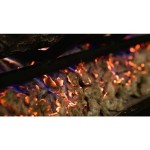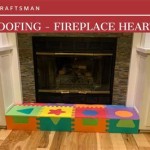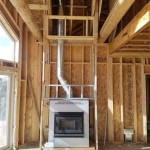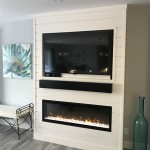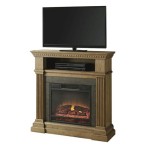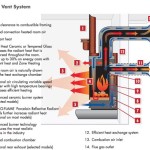Gas Fireplace Repair in Vermont: Ensuring Warmth and Safety
Gas fireplaces represent a popular heating and aesthetic amenity in Vermont homes, providing efficient warmth and a cozy ambiance during the state's often long and harsh winters. However, like any mechanical appliance, gas fireplaces require regular maintenance and can, on occasion, necessitate professional repair. Understanding the common issues that affect gas fireplaces, the importance of qualified repair services, and preventative measures can assist Vermont homeowners in maintaining the safety and operational efficiency of their fireplaces.
The operation of a gas fireplace involves a complex interplay of components, including gas lines, burners, pilot lights, valves, and electronic ignition systems. When any of these components malfunctions, the fireplace may fail to operate correctly, presenting potential safety hazards if not addressed promptly. Proper repair requires a thorough understanding of gas appliance technology, local building codes, and safety regulations. Homeowners should always prioritize engaging qualified technicians for any gas fireplace repair needs.
Common Gas Fireplace Problems in Vermont
Numerous factors can contribute to gas fireplace malfunctions. In Vermont, the age of the fireplace, frequency of use, environmental factors, and the quality of installation can all play a role. Identifying the specific problem is the first step in initiating the appropriate repair process.
One frequent issue is a pilot light that won’t stay lit. This can stem from a faulty thermocouple, a dirty pilot orifice, or a gas supply issue. The thermocouple is a safety device that senses the pilot flame and allows gas to flow to the main burner. If the thermocouple is damaged or covered with soot, it may not generate sufficient voltage to keep the gas valve open. A clogged pilot orifice, often caused by dust or debris, can also restrict the flow of gas to the pilot light, causing it to extinguish prematurely.
Another common problem is a burner that won’t ignite or burns with a yellow or orange flame. This can indicate a problem with the gas supply, the burner itself, or the air-to-fuel mixture. A yellow or orange flame, as opposed to a clean blue flame, often signifies incomplete combustion, which can produce carbon monoxide, a dangerous and odorless gas. Low gas pressure, due to a faulty regulator or an issue with the gas supply line, can also prevent the burner from igniting properly. Additionally, blocked burner ports or corrosion can impede the flow of gas and affect the flame quality.
A malfunctioning electronic ignition system is another potential source of trouble. Many modern gas fireplaces utilize electronic ignition systems instead of a traditional pilot light. These systems rely on a spark igniter or a hot surface igniter to ignite the gas. If the igniter is faulty, the fireplace may fail to start. The igniter itself, the wiring connecting it to the control module, or the control module itself could be the cause of the problem.
Finally, unusual odors emanating from the gas fireplace should always be investigated immediately. A gas odor usually indicates a leak in the gas line, which presents a significant fire and explosion hazard. Even a faint gas odor should be treated seriously, and the fireplace should be shut off immediately. Contacting a qualified gas technician to locate and repair the leak is essential.
The Importance of Professional Gas Fireplace Repair
Attempting to repair a gas fireplace without proper training and experience can be extremely dangerous. Gas lines and combustion processes involve inherent risks, and any mistakes can lead to gas leaks, fires, explosions, or carbon monoxide poisoning. Engaging a qualified and licensed gas fireplace technician is crucial for ensuring safety and proper repair.
Qualified technicians possess the necessary knowledge and tools to diagnose and repair a wide range of gas fireplace problems. They are trained in gas appliance safety protocols and are familiar with local building codes and regulations. They can accurately identify the root cause of the problem, whether it’s a faulty component, a gas leak, or a ventilation issue. They also have access to genuine replacement parts, ensuring that the repair is performed correctly and that the fireplace operates safely and efficiently.
Licensed technicians carry insurance that protects homeowners from liability in case of accidents or damage during the repair process. This is particularly important when dealing with gas appliances, where the potential for serious incidents exists. Moreover, professional repair often comes with a warranty, providing homeowners with peace of mind knowing that the repair is guaranteed. If the problem recurs within the warranty period, the technician will return to fix it at no additional cost.
Furthermore, attempting DIY repairs may void the manufacturer’s warranty on the gas fireplace. Manufacturers typically require that repairs be performed by qualified technicians to maintain the validity of the warranty. Using unlicensed or unqualified individuals for repairs can have significant financial implications if the fireplace experiences further problems down the line.
In Vermont, many municipalities require permits for certain types of gas fireplace repairs, such as replacing gas lines or altering the venting system. A qualified technician will be familiar with these requirements and will ensure that all necessary permits are obtained before commencing any work. This ensures compliance with local regulations and helps to avoid potential fines or penalties.
Preventative Maintenance for Vermont Gas Fireplaces
Regular preventative maintenance can significantly extend the lifespan of a gas fireplace and minimize the need for costly repairs. Simple maintenance tasks, such as cleaning the fireplace glass, inspecting the burner ports, and checking the venting system, can be performed by homeowners. However, more complex maintenance procedures, such as cleaning the burner assembly and testing the gas pressure, should be left to qualified technicians.
Cleaning the fireplace glass is important for maintaining optimal visibility of the flames. Over time, soot and deposits can accumulate on the glass, obscuring the view and reducing the aesthetic appeal of the fireplace. Using a specialized fireplace glass cleaner can effectively remove these deposits without damaging the glass. Avoid using abrasive cleaners or scouring pads, as these can scratch the glass.
Inspecting the burner ports for obstructions is another important maintenance task. Dust, debris, and spider webs can accumulate in the burner ports, restricting the flow of gas and affecting the flame quality. A soft brush or a vacuum cleaner can be used to remove these obstructions. It is crucial to ensure that the gas supply is turned off before cleaning the burner ports.
Checking the venting system for blockages is also essential. The venting system is responsible for safely removing combustion byproducts from the fireplace. Blockages in the venting system can cause carbon monoxide to accumulate in the home, posing a serious health risk. Inspect the vent termination on the exterior of the home for any signs of obstruction, such as bird nests or debris. If any blockages are found, they should be removed immediately.
Annual inspections by a qualified gas fireplace technician are highly recommended. During an inspection, the technician will thoroughly examine all components of the fireplace, including the gas lines, burner assembly, pilot light, ignition system, and venting system. They will also test the gas pressure and carbon monoxide levels to ensure that the fireplace is operating safely and efficiently. Based on the inspection findings, the technician can recommend any necessary repairs or maintenance procedures.
Additionally, homeowners should familiarize themselves with the operation of their gas fireplace, including the location of the gas shut-off valve and the proper procedures for lighting the pilot light. Keeping the area around the fireplace clear of combustible materials, such as curtains and furniture, is also crucial for fire safety. By adopting these preventative measures, Vermont homeowners can enjoy the warmth and comfort of their gas fireplaces safely and efficiently for many years to come.
Addressing issues promptly and utilizing qualified professionals is the path to ensuring safety and longevity for gas fireplaces in Vermont homes.

Blueflame Gas Fireplace Service Updated April 2024 Barre Vermont Services Phone Number Yelp

Sj Gas Fireplace Services Llc Pitman 08071

Affordable Propane Fireplace Service In Burlington

Vf40 0002090 Vermont Castings Gas Vent Free Fireplace Parts At Fireplaceparts Com

John Devito Gas Fireplace Repair

Sj Gas Fireplace Services Llc Pitman 08071

Gas Fireplace Repair Maintenance Services West Valley Az

Vermont Castings Vent Free Stoves Main Street Fireplace Fall

Gas Stoves Archives Hearth And Home Distributors Of Utah Llc

Victory Direct Vent Gas Insert By Vermont Castings
Related Posts

